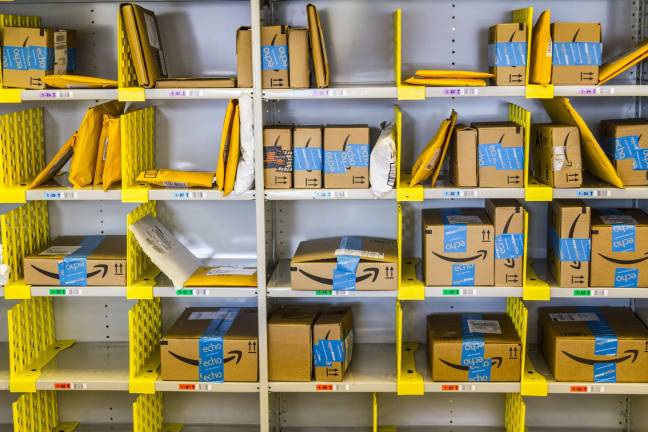Welcome to Amazonia

Is the titan of commerce the great American one-stop shop, or a shredder of the fabric of community?
You can shop however you like
From the general store to the Sears catalog to big box stores and now to Amazon, the advantages of a one-stop shop have been entrenched in our culture. Although some diehards will keep doing things the hard way for social or community reasons, the majority of us have been convinced that having mundane products delivered to our doorstep for minimal to free shipping is a good thing.
Amazon is the current reality in retailing consumer products. It has grown with the internet and created opportunities for micro to medium size businesses to reach global markets. It has created jobs in our country in both direct and indirect ways.
The recent news that a new Amazon fulfillment center will be built on Staten Island, coming on the heels of its acquisition of Whole Foods, is a serious indicator of continuing expansion into the efficient delivery of a vast array of goods and perishable items. The benefit for consumers is convenience and lower cost per purchase.
Personally speaking, I am a longtime creator, maker and seller of specialty glass items. For nearly 40 years I have produced in my backyard studio, sold nationally through shops and galleries and travelled the country retailing at craft shows. Internet marketing has changed the climate to the extent that it is now much more difficult to grow a sustainable business based on this simple, DIY model.
Things are different now, there’s no question, but not necessarily for the worse. In fact, after launching my upcycled glass bowls on the crowd funding site, Kickstarter, I joined Amazon Launchpad, which features successfully funded products. Last holiday season I sold more bowls on Launchpad than through all other methods combined. It is very exciting for me to see the simultaneous growth of creative entrepreneurship and the artisan economy.
And call it a hunch, but something tells me that when it comes to our buying habits, the pendulum is going to swing back the way of a more personal, face-to-face marketplace. Just as the American craft resurgence of my generation was fueled by the hype of mass production, I predict that the current generation will eventually come around to the point of view that certain needs can’t be fulfilled via overnight delivery.
There is an old saying that goes, “Every stick has two ends.” We are very fortunate to live in a country where we have the choice to grab one end or the other.
Gary Genetti of Warwick, NY is a glass artist whose work is featured in the National Museum of American Art. genettiglass.com.
An existential threat to community
Amazon already has monopoly power in online retail. They are capturing almost one out of every two dollars that Americans spend online. They’re also the place where 55 percent of all online shopping searches start. People are no longer starting at Google or a search engine, they’re starting directly at Amazon, precluding competition right out of the gate.
Amazon is an order of magnitude more of a threat to competition than, say, Walmart, because Amazon isn’t a retailer. Sure they’re the biggest seller of books, toys, electronics, and clothing online or off. But what they’re interested in is controlling the underlying infrastructure of the economy. They want to own the rails, essentially, that all the other businesses that want to sell you stuff have to ride in order to get to you.
With the takeover of Whole Foods, Amazon is taking its tremendous power online and beginning to extend that into the physical world of retail. That has huge implications for all of us, for the economy as a whole, for innovation, competition, for consumers, for workers. It’s easy to look at Whole Foods and say, well, they’re a relatively minor, niche player in the grocery industry. That’s true, but they’re a foothold into one of the most pivotal sectors of the consumer goods industry: food.
The food sector is one of the few bright spots in the economy. The Federal Reserve just came out with this book, Harvesting Opportunity, where they talk about how in both urban and rural areas the growth of local and regional food systems, with their smaller scale food manufacturing and retail systems, has been a real driver for new growth and economic vitality in places that were missing it.
Food is also a sector with very thin margins. Amazon could come in and apply pressure in a way that pushes down returns to those producers, to their workers. We’ve seen this in the book industry. The average author income is down about 30 percent, and many people in that industry say that’s because of Amazon flexing its muscle and demanding bigger discounts.
The way that Amazon finances its below-cost selling is partly by squeezing fees and margins from suppliers. How is that going to affect independent stores that don’t have the luxury of losing money for years on end in order to stay in the market? How is it going to affect suppliers, farmers and others?
A lot of grocery stores are unionized, and workers earn a family supporting wage with benefits in those jobs. Amazon has a very different labor model. It has a kind of 19th century labor model that pays very low wages, uses a lot of temps and increasingly automates jobs. When we think about what this means for us on the income side of the ledger, in terms of our ability to get decent work to have thriving local economies, there’s a lot of reason to be concerned.
Stacy Mitchell of Portland, Maine is co-director of the Institute for Local Self-Reliance, and co-author of the 2016 report, Amazon’s Stranglehold.